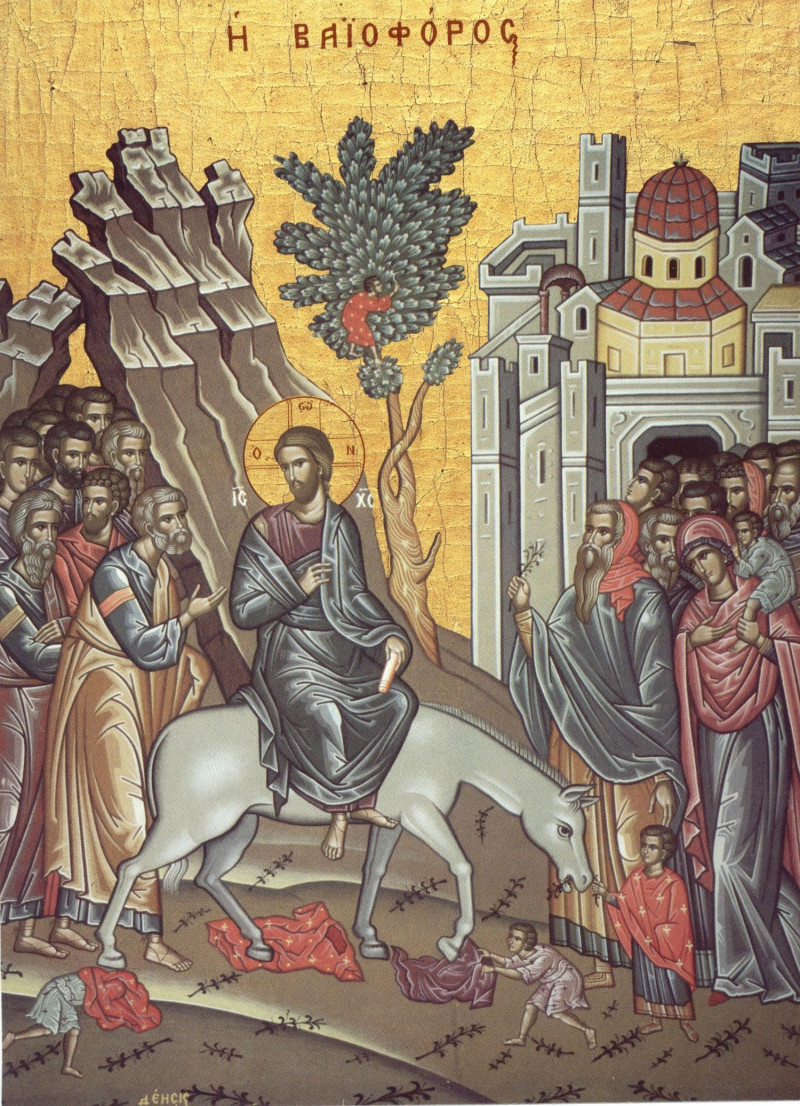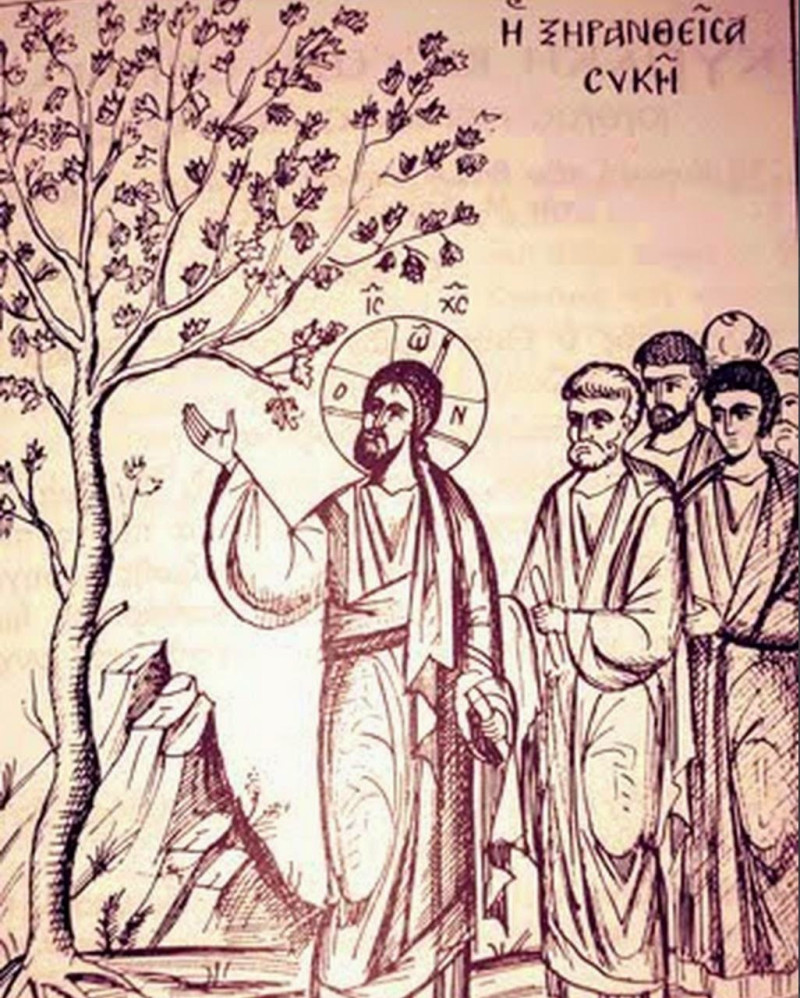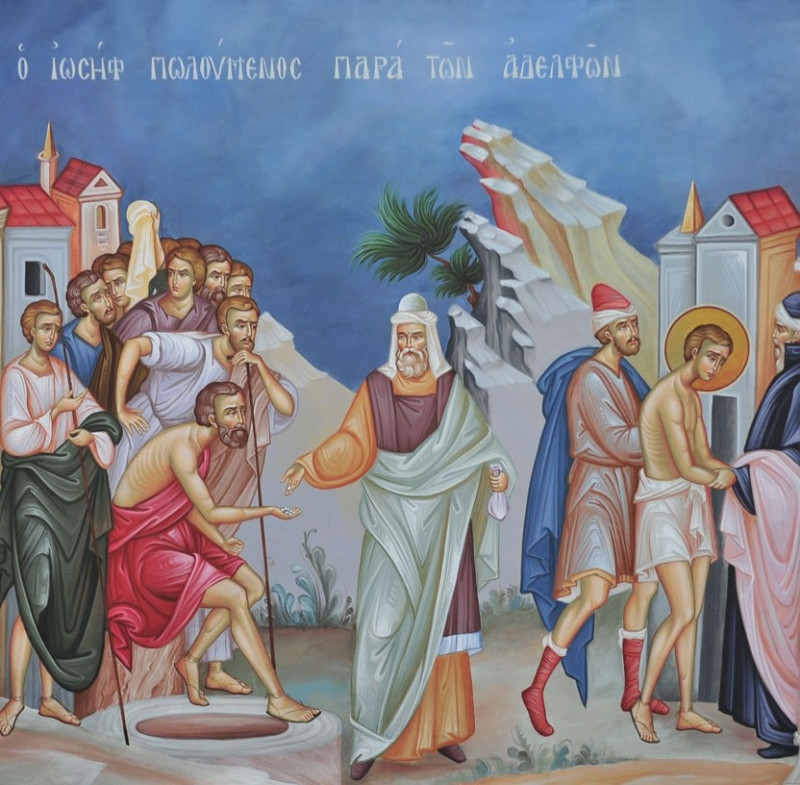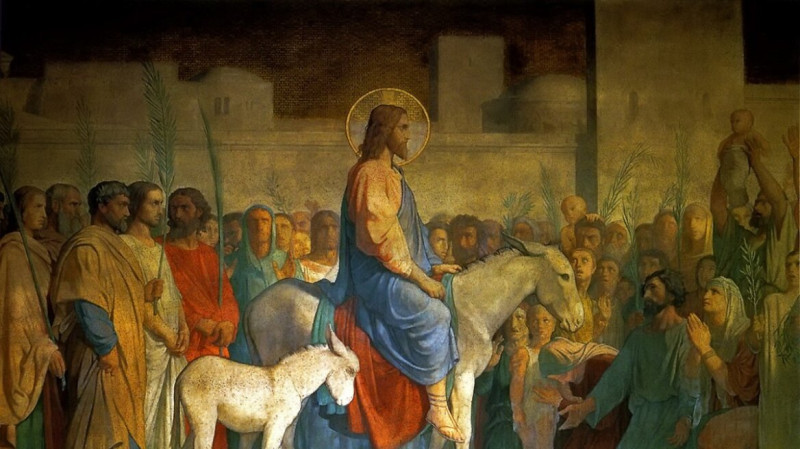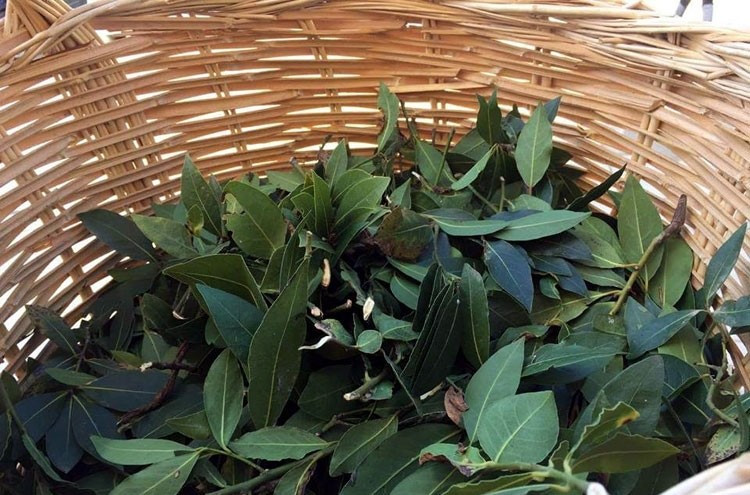In the functional act of the Church, the next day begins from the afternoon of the previous one. So, the sequences that are performed relate to the events of the next day
By Marina Zoziou
The Great Week It is something unique in the ecclesiastical year. In the importance, after all, of the cosmos, according to the saint John Chrysostom is also due to the name of the most sacred week of the year as “Great”.
In the functional act of the Church, the next day begins from the afternoon of the previous one. So, The sequences performed on the evening of the Holy Week concern the events of the following day.
The “Avlaia” of the Great Week opens today, Palm Sunday In the afternoon, with the ‘Nymph Sequences’. In particular, the Church, in order to be able – as much as possible – more faithful to participate in the sequences, allowed the Orthodox of each day (the morning sequence of each day, which summarizes its meaning), to be chanted in the afternoon of the previous one.
With the help of Archimandrite Fr. Filoumenos Roubi, Secretary General of the Holy Archdiocese of Athens– We will give the mark of the day. Also, Ms. Evlena Kardamila, PhD candidate will ‘travel’ us to Customs and traditions in every corner of Greece, which are deeply rooted over time.
On Sunday’s Sunday In the morning, our Church is experiencing Christ’s triumphant entrance into Jerusalem, composing a cheerful precursor to the painful humiliations that will follow.
The facts are as follows: Six days before the Judaean Easter (Judaic Easter was a celebration that lasted seven days and was dedicated to the memory of the exit of the Jews from Egypt and the passage to the land of the profession), Christ sends two of his disciples, telling them; “Go to the opposite village and as you will enter, you will find a tied foal, on which no man has ever sat down. Solve it and bring it here. And if anyone asks you, why are you solving it? You will answer that the Lord needs it ». So it was. They brought it to Jesus, and after throwing their outer clothes on him, they helped him climb.
Due to the feast, many people had gathered in Jerusalem. When the coming of Christ was learned, they took in the hands “The Palm of the Phoenicians” And they came out to pre -empt him, shouting: “Osanna, blessed is the one who comes in the name of the Lord, the king of Israel.” A few days earlier (we celebrate it the day before), Christ had resurrected Lazarus in Bethany. This fact, to be resurrected four days dead and even buried, had been said to Israel immediately. People believed that God would perform a miracle that would change their unbearable situation. This is despite the iron fist of Rome that was also in the stubbornness of the corruption and the pity of the elders.
So there was a habit in the ancient times, when a king entered a city, he was entering a horse, satellite, with supporters and accompaniment, demonstrating his bravery, grandeur and glory. That is why the crowds that day were cheering. They cheered on the entrance to the Jerusalem, who believed that they would solve their problems, political, social, cultural – and even personal – problems. They cheered on the entrance of someone who would free their nation and re -establish a theocratic and Theocentric state.
In our Church this day we share the “Vagia”
According to Archimandrite P. Filoumenou Roubi, For the Church, this “Messianic hero”, as the crowds understood it, did not exist. Indeed, we cheer and cheer “Those who come in the name of the Lord”but our content of the words is different from that of the people who welcomed Jesus Christ then, that first “Sunday of the Saints”. They were expecting a victory – Victory Visible and Visible. We expect death – death witness.
In our Church this day we share the “Vagia”. While the Israelites held were branches of palm trees (probably dates), we distribute laurel or myrtle branches. With the transfer of Christianity to other peoples, the custom was spread and adapted to the flora of each region. These plants were chosen – probably – as more similar to the palm trees, since on the one hand they are evergreen, on the other they have a pleasant aroma. This custom seems established as early as the 9th century. In the early Christian years, in Jerusalem, the bishop entered the city “on Pellos Onos”, representing the event, while the Byzantine “The Emperor’s Walk”, from the Palace to the Great Church. Along this route, the emperor distributed the world to the world and the crosses and the Patriarch Crosses and candles.
Sunday afternoon – Holy Monday Orthodox
On the afternoon of Sunday, the scene is changing. The next day’s rectum is chanted (Holy Monday)That is why from the atmosphere, from triumphantly festive, it turns into a mourning devotion. After the exhaustion he chanted three times the well -known and beloved tropari “Id ὁ Bridegroom comes”. The lights are off and in the dark, the image of Christ as a bridegroom, which will be worshiped for three days, is set in the dark. That is why the first three days of the Holy Week constitute a functional unit and refer to the language of the faithful as “Nymph Sequences” or “Bridegroom”.
The icon of the bride usually represents the Christian (bodice), with a thorny wreath on the head, which tilts slightly to the right, the hands tied, hold the sarcastic cane, while red chlamydia covers one shoulder, leaving the other naked. Christ is projected as a bridegroom, that is, as a groom. Christ Himself often likened his coming to marriage and himself to a bridegroom (groom). And at the end of the revelation, paradise is symbolized by a “city adorned as a bride”, in which nothing is bad.
The importance of this simulation lies in the fact that in the face of Christ there is a “sacred marriage” of God and humanity: in marriage the two spouses are united, while in Christ the united God and man have been united, so Christ is a God. That is why Christ is called “Bridegroom of the Church”, the relationship of the Androgynous is likened by the Apostle Paul to the relationship of Christ and the Church (in the letter to Ephesians, chap. Love of God and man.
- In the Synaxari of Good Monday there is a reference to Pangalo Joseph, a person of the Old Testament. For him we read in chapters 37-50 of Genesis. It is a predecessor of Christ, because he too, the dear son of the Father, was envied by the homosexual of the Jews, sold by his disciple for thirty silver and closed in the dark pit, the grave.
- Today, today we are also mentioning the fruitless synagogue, which the Lord was cursed and immediately dried up. This incident is being read on Good Monday morning in the previous Divine Liturgy. The fruitless synagogue, according to the interpretation of the Holy Fathers. It symbolizes both the synagogue of the Jews, who had no spiritual fruit, as well as any man who lacks spiritual fruits, that is, virtues. The evangelist Mark says that as the Lord attacked the Syk and dried up, they immediately dropped its lush leaves and the next day its root was dried.
The customs of our place – the decoration of the churches
According to Ms. Evlena Kardamila, The most typical custom in the feast of the Saints, both for traditional and modern society, is the Decorating the churches with palm leaves and the distribution of laurel to the church. In many areas in the leaves of the palm trees, various shapes such as crosses, moons and stars are given and after the church They are placed like amulets in the iconostasis of houses.
In traditional society, the preparation of the church’s decoration was undertaken from the previous day’s newly married girls or newly married couples with the expectation of being transferred to them by the fertile power enclosing the branches. In Epirus for example, as many as Girls were married during the year, wearing green dresses and red tsarouki and accompanied by their female relatives went to church the Vagia. After worshiping all the images, they hit the bell once each.
On the other hand in Mani and Thrace The newly married couples went to the church together and even believed that any couple who arrived first would soon have a son. In other areas of Greece, such as Laconia, On the day of Sunday, the “bugs” took place. At the end of the operation, the women who wanted to give birth in the year, were slightly beating each other with the bay branches that the priest had shared before.
According to popular faith, the fertile power of the Vacia was transmitted not only to humans, but also to anything else that is fruitful, such as animals and plants. For this reason in many areas, such as Dogwith the bays they took from the church, they touched after their animals and then placed them on their trees to get fruitful.
At the same time, traditional society attributed to Vagia the power of therapeutic, but also deterrent to every evil. So in areas like the coasts of Asia Minor and Lesvosafter the Church was commemorating, groups of children took the vagies and distributed them from house to house singing “Vagia, Vagia Vagio eat fish and colio and the other Sunday eat red egg”. This augmented of children with Barcia branches is based on ancient Greek spring celebrations, during which children holding branches adorned with fruits, returned to the streets singing wishes for good crop.
Finally, throughout the happy climate of the adornment of the Church and the youth of the young, the feast of Jesus’ triumphant entry into Jerusalem, is complemented by the relaxation of fasting, since this day it is common to abolish the fish at the festive table.
Source: Skai
I have worked as a journalist for over 10 years, and my work has been featured on many different news websites. I am also an author, and my work has been published in several books. I specialize in opinion writing, and I often write about current events and controversial topics. I am a very well-rounded writer, and I have a lot of experience in different areas of journalism. I am a very hard worker, and I am always willing to put in the extra effort to get the job done.


